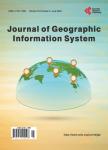Investigation of Spatial Risk Factors for RVF Disease Occurrence Using Remote Sensing &GIS—A Case Study: Sinnar State, Sudan
Investigation of Spatial Risk Factors for RVF Disease Occurrence Using Remote Sensing &GIS—A Case Study: Sinnar State, Sudan作者机构:Remote Sensing & Geographical Information System Master Program Sudan Academic of Sciences (SAS) Khartoum Sudan Remote Sensing & Geographical Information System Program Remote Sensing Authority-National Center for Research Khartoum Sudan College of Agricultural Studies Sudan University of Science & Technology Khartoum Sudan
出 版 物:《Journal of Geographic Information System》 (地理信息系统(英文))
年 卷 期:2015年第7卷第2期
页 面:226-257页
学科分类:1002[医学-临床医学] 100214[医学-肿瘤学] 10[医学]
主 题:Rift Valley Fever Vector-Borne Diseases Spatial Risk Factors Normalized Difference Vegetation Index (NDVI)
摘 要:Rift Valley Fever (RVF) is an emerging, mosquito-borne disease with serious economical and negative implications on human and animal health. This study was conducted to verify the factors which influenced the spatial pattern of Rift Valley Fever occurrence and identified the high risk areas for the occurrence of the disease at Sinner State, Sudan. The normalized difference vegetation index (NDVI) derived from Moderate Resolution Imaging Spectroradiometer (MODIS) satellite and rainfall data in addition to the point data of RVF clinical cases in humans were used in this study. In order to identify the RVF high risk areas, remote sensing data and rainfall data were integrated in a GIS with other information including, soil type, water body, DEM (Digital Elevation Model), and animal routes and analyzed using Spatial Analysis tools. The information on clinical cases was used for verification. The Normalized Difference Vegetation Index (NDVI) was used to describe vegetation patterns of the study area by calculating the mean NDVI. The results of the study showed that, RVF risk increased with the increase in vegetation cover (high NDVI values), and increase in rainfall, which both provided suitable conditions for disease vectors breeding and a good indicator for RVF epizootics. The study concluded that, identification of high risk area for RVF disease improved the understanding of the spatial distribution of the disease and helped in locating the areas where disease was likely to be endemic and therefore preparedness measures should be taken. The identification represents the first step of prospective predictions of RVF outbreaks and provides a baseline for improved early warning, control, response planning, and mitigation. Further detailed studies are recommended in this domain.



